May 29, 2024
No Comments
By
admin
In this hyperconnected world that is dominated by platforms like Instagram, Snapchat, and TikTok, Pinterest is developing as a silent hero, especially among Gen Z users. With over 300 million young users monthly, Pinterest has become a one-stop destination for Gen Z to find their interests and transform their ideas into reality.
As per the latest research, Pinterest has become a ‘Gen Z World’ now. Here are how companies may succeed in it. Gen Z users make up 42% of the platform's monthly global users, which is a sizable chunk of the user base.
How can businesses effectively tap into the increasing influence of Gen Z on Pinterest?
Pinterest conducted thorough research in order to understand the preferences and behaviors of Gen Z on the platform. Here are some crucial Pinterest digital marketing strategies for marketers to successfully reach the audience.



